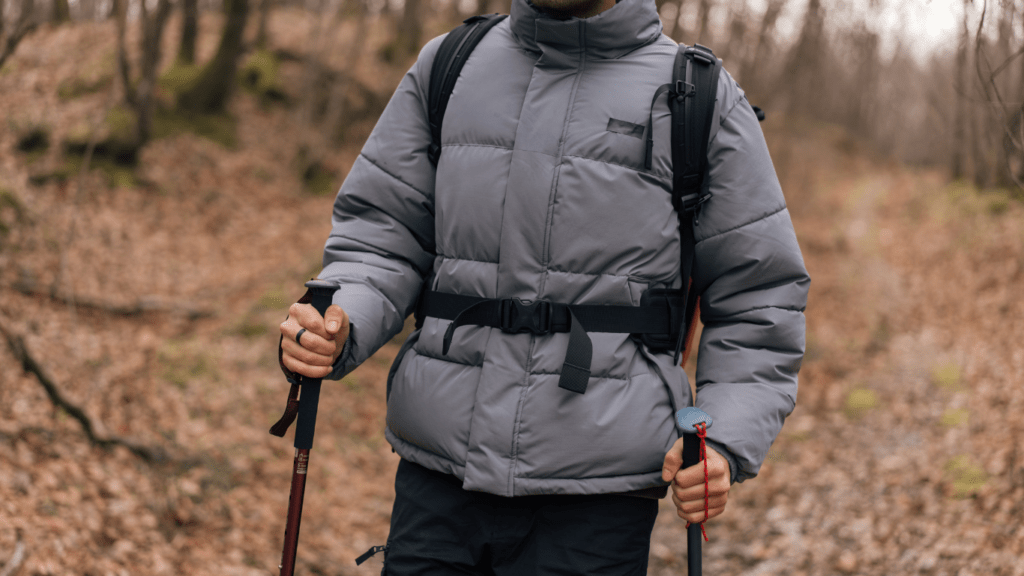Embarking on a hiking adventure can be exhilarating, but the strain on your body from navigating challenging terrains can sometimes dampen the experience. That’s where trekking poles come in – these simple yet effective tools can make a world of difference in your outdoor escapades. In this article, I’ll delve into the numerous benefits of using trekking poles and provide you with valuable insights on how to make the most out of them.
From enhancing stability on uneven trails to reducing strain on your joints, trekking poles offer a plethora of advantages for hikers of all levels. Whether you’re a seasoned trekker or a novice explorer, incorporating trekking poles into your gear can significantly improve your hiking experience. Stay tuned as I guide you through the proper techniques and benefits of using trekking poles, helping you elevate your outdoor adventures to new heights.
Importance of Trekking Poles
Trekking poles play a crucial role in enhancing hiking experiences. They are not just an accessory but a valuable tool that can significantly benefit hikers of all levels.
They help distribute weight more evenly across the body, reducing strain on the legs and joints, especially when navigating steep inclines or descents. Moreover, trekking poles provide added stability on uneven terrain, minimizing the risk of slips and falls.
By engaging the upper body muscles, trekking poles can also improve posture and reduce fatigue, allowing hikers to maintain a steady pace for longer durations.
Overall, the importance of trekking poles lies in their ability to enhance stability, reduce strain, and improve endurance, ultimately making hiking more enjoyable and less physically taxing.
Advantages of Using Trekking Poles
Trekking poles offer numerous benefits that enhance the hiking experience and provide practical advantages to outdoor enthusiasts. Let’s delve into the advantages of incorporating trekking poles into your hiking adventures.
Improving Balance and Stability
Using trekking poles while hiking significantly enhances balance and stability on uneven terrains. By planting the poles firmly on the ground, I can establish a wider base of support, minimizing the risk of slips and falls. This stability is crucial when navigating rocky or steep trails, allowing me to feel more secure and confident in my steps.
Reducing Strain on Joints
One of the key advantages of trekking poles is their ability to alleviate strain on joints, particularly in the knees and ankles. By engaging the upper body muscles and transferring some of the weight from the lower body to the poles, I can decrease the impact on my joints while hiking long distances. This redistribution of weight helps prevent injuries and promotes better joint health over time.
Proper Techniques for Using Trekking Poles
Incorporating the correct techniques when using trekking poles can significantly enhance your hiking experience and maximize the benefits they offer. By following these proper methods, you can improve stability, reduce strain on your joints, and increase overall efficiency while trekking.
- Adjusting Pole Length:
When starting your hike, ensure that your trekking poles are set to the correct length. Stand upright with the poles tip-down and your elbows at a 90-degree angle. Adjust the length until your arms form a right angle, as this positioning provides optimal support and balance. - Gripping the Poles:
Hold the poles with a relaxed grip, allowing for a natural swing as you walk. The straps should be utilized to support your wrists without the need to grip the poles tightly, helping to maintain a consistent and comfortable hold throughout your trek. - Uphill Technique:
When ascending steep slopes, shorten your poles to engage your upper body and provide additional support. Plant the poles slightly ahead of you, using your arms to propel yourself upward while maintaining a stable rhythm. This technique aids in reducing leg strain and distributes effort more evenly across your body. - Downhill Technique:
For descents, lengthen your poles to help absorb impact and maintain balance on uneven terrain. Place the poles slightly behind you as you descend, allowing them to bear some of your weight and easing the burden on your joints. By utilizing your poles effectively, you can navigate downhill sections with greater control and confidence. - Crossing Obstacles:
When encountering obstacles such as streams, fallen trees, or rocky terrain, consider using your trekking poles for added stability and support. By planting the poles strategically and utilizing them as assistive tools, you can navigate challenging terrain more safely and confidently.
By mastering these proper techniques for using trekking poles, you can enhance your hiking adventures, mitigate strain on your body, and make the most of the benefits that these essential hiking accessories provide.
Tips for Adjusting and Using Trekking Poles Correctly
When it comes to adjusting and using trekking poles correctly, I’ll share some valuable tips to help you make the most of this essential hiking gear. Proper adjustment and technique play a crucial role in maximizing the benefits of trekking poles while ensuring your safety and comfort on the trail.
Adjusting Pole Length
Starting with pole length, it’s essential to set them at the correct height to maintain a natural arm position while hiking. A common method for adjusting pole length is to position your elbow at a 90-degree angle and adjust the poles until your forearms are parallel to the ground. This ensures optimal support and efficiency when using trekking poles.
Gripping Techniques
Next, let’s talk about gripping techniques. When holding trekking poles, remember to grip the handle firmly but without tensing your hands. Ideally, your elbows should form a 90-degree angle, allowing your arms to swing naturally with each step. This grip minimizes strain on your wrists and hands while providing stability and support during your hike.
Uphill and Downhill Techniques
For uphill climbs, shorten your poles slightly to help maintain balance, reduce strain on your legs, and propel yourself forward. Engage your core muscles and use the poles to push yourself up the incline. Conversely, when tackling downhill sections, lengthen the poles to provide stability and control. Placing the poles slightly ahead of you can help absorb shock and prevent slipping on steep descents.
Crossing Obstacles
When crossing obstacles like streams, rocks, or fallen logs, use your trekking poles to test stability and provide additional support. Place the poles firmly on the ground before stepping over the obstacle to secure your footing and maintain balance. This technique can prevent falls and injuries while navigating challenging terrain.
By mastering these tips for adjusting and using trekking poles correctly, you can elevate your hiking experience, reduce strain on your body, and enjoy the full benefits of this indispensable hiking tool. Be sure to practice these techniques on different terrains to enhance your skills and confidence with trekking poles during your outdoor adventures.



 Karencita Oboyler brings her creative flair and deep appreciation for the natural world to her role at Terra Tactician Tactics. With a background in digital marketing and content strategy, Karencita is dedicated to crafting engaging and visually appealing articles that captivate the platform's diverse audience. Her work focuses on highlighting unique outdoor destinations, offering practical travel advice, and showcasing the beauty of nature through stunning photography and storytelling. Karencita's ability to blend creativity with valuable information has helped Terra Tactician Tactics stand out as a dynamic and compelling resource for outdoor enthusiasts.
Beyond her content contributions, Karencita is passionate about building a vibrant community around the platform. She is committed to fostering an inclusive space where everyone, from seasoned adventurers to curious beginners, feels welcomed and inspired to explore the great outdoors. Her innovative ideas and strategic approach to content development have been instrumental in expanding Terra Tactician Tactics' reach and impact. Karencita's enthusiasm for the project is matched only by her love for nature, making her an integral part of the team and its continued success.
Karencita Oboyler brings her creative flair and deep appreciation for the natural world to her role at Terra Tactician Tactics. With a background in digital marketing and content strategy, Karencita is dedicated to crafting engaging and visually appealing articles that captivate the platform's diverse audience. Her work focuses on highlighting unique outdoor destinations, offering practical travel advice, and showcasing the beauty of nature through stunning photography and storytelling. Karencita's ability to blend creativity with valuable information has helped Terra Tactician Tactics stand out as a dynamic and compelling resource for outdoor enthusiasts.
Beyond her content contributions, Karencita is passionate about building a vibrant community around the platform. She is committed to fostering an inclusive space where everyone, from seasoned adventurers to curious beginners, feels welcomed and inspired to explore the great outdoors. Her innovative ideas and strategic approach to content development have been instrumental in expanding Terra Tactician Tactics' reach and impact. Karencita's enthusiasm for the project is matched only by her love for nature, making her an integral part of the team and its continued success.